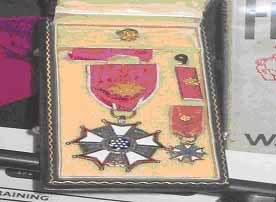Начало Гуанчжоу Бизнес Разное Контакт
Биографии интересных людей
Фейрберн: полицейский из Шанхая
Про этого человека ходит множество легенд и уже сложно выбрать что правда, а что вымысел. Здесь я привожу информацию, которая доступна на сегодняшний день и хоть как-то подтверждена фактическим материалом. Там, где нет стопроцентной уверенности в достоверности, будут сделаны оговорки. Fairbairn - легендарный инструктор по рукопашному бою времен второй мировой войны. Origins Юные годы Фейрберна хорошо описаны в книге Peter Robins “The Legend of W.E Fairbairn - Gentleman and Warrior”. Вильям Эварт Фейрберн (William Ewart Fairbairn) родился в достаточно бедной, многодетной семье in Rickmansworth in Hertfordshire. Его отец работал резчиком кожи, а мать присматривала за четырнадцатью детьми. Early tales of Fairbairn were that he used to read newspapers to a blind man and that his first employment was originally as an apprentice leather worker. Finding this employment unfavourable and desiring to see the world in 1901 he joined the Royal Marines as an under-aged recruit. I know of two sources that have provided this information to later researchers, both of them are now dead. Another has provided the same but he is on the verge of being incarcerated, suffice it say that I have no information to disprove these events. Passing his basic training Fairbairn was posted to a number of bases in Britain before he joined the Royal Marines Legation Guard in Korea. I believe that it was whilst serving there that the basis for his double-handed stick method was first developed. He certainly used his time there to his advantage and was part of a team which competed against members of the Japanese Armed Forces in the then popular sport of Bayonet fighting. In 1907 Fairbairn left the Royal Marines to take up service as a Police Officer in the Shanghai Municipal Police. Posted first as an ordinary constable he rose through the ranks and served as a Training Officer instructing in Drill, Musketry and Self Defence. The picture below shows a typical scene from an SMP self defence class of that time. Many things have been written about Shanghai from that period, the crime rate was one of the highest in the world and violent offences were the majority rather than the exception. The criminal elements were organised, tough and determined - they were also armed with the latest weaponry of the time.В The Shanghai Municipal Police was comprised of individuals from many nations, each playing their part in combating the criminal elements. It was one of the first Police Forces to have a systemised Defensive Tactics course for it’s officers. This system found favour in other Police forces in countries such as Sweden, Hong Kong and Singapore and later was also shown to Law Enforcement Officers in the United States. The principles of the Defensive Tactics system were codified into an SMP manual simply entitled “Manual of Self-Defence” in 1915. В Leopold MacLagen had in 1914 given a 12 day course of instruction to the SMP and it has been noted by the researcher Harry Cook that the techniques (depicted in their written works) are remarkably similar to Fairbairn’s. Fairbairn however had been training in Jiu-Jitsu with a Professor Okada since 1908, training in Kodokan Judo followed that with an Inspector Ogushi of the SMP from 1916 onwards. As an early cross-trainer we know that he also had knowledge of французский сават, Cornish Wrestling и английский бокс. Он также получил подготовку китайского бокса (кунфу) under one Tsai Ching Tung, который, как он писал, был инструктором servants of the Chinese Empress. В В В В В В В В Он сделал попытку He codified his instruction в одну из первых современных систем Police Defensive Tactics Systems which he named “Defendu”. Эта книга была издана в 1926 году, а затеи дополнена и переиздана под именем “Scientific Self Defence” в 1931. Оба учебника были переизданы в наше время издательством Paladin Press. A note must be made here as to the question of the schools (Ryu) his teachers (Okada and Tung) belonged to. В прошлом некоторые исследователи называли стили, которые практиковал Фейрберн в Китае, как определенные школы Jiu-Jitsu и кунфу, в частности Shin-no-Shindo Ryu и багуа джан (Pa Kua, Bagwa). Unfortunately any connection made is tenuous at best and often originate from sources with a vested interest in those same arts. Please let me state for the record that no independent research has verified any connection to Fairbairn and these schools. Unfortunately some researchers have let supposition replace fact; this “fact” becomes accepted as “truth” as time passes. We know that Fairbairn studied Jiu-Jitsu and Kung Fu, we do not know which schools he studied - that is fact. Until someone can provide definitive and independently verifiable evidence to the contrary it remains fact and nothing can change this (see notes). Fairbairn did excellent work both as a Trainer and Operative for the SMP; he went on many hazardous assignments and helped create the first “Reserve Unit” which was one of the first SWAT type units. Detachments from the United States Marine Corps were also stationed in Shanghai and many of its personnel also received tuition from the SMP. Fairbairn made many close and long lasting friendships with some Corps officers such as the “Three Sams”. These connections ensured that his methods of Defendu were exposed to Col A.J Drexel-Biddle who was the main USMC Instructor for close combat, some methods were included in his second edition of “Do or Die” and Fairbairn referenced. Otherwise Biddle’s methods were all of his own compiling and are remarkably unique.
Ever conscious for the safety of his people he also designed new weapons such as knives and truncheons (batons). Another example of his ingenuity and passion in the area of Officer Protection was his work with bullet proof vests and shields, several were designed by him and a brief film was produced to illustrate their efficiency.В
On call for most of his career to deal with riots, kidnappings and violent crimes he made his way through the ranks and eventually finished as Assistant Commissioner of the force. Along the way he had made many friends from all nations, close to retirement the threat of war was however preparing to destroy everything he held dear. The Japanese army had long been occupying the area of Manchuria (Manchukuo) and had been battling the loyalist Chinese forces of General Chiang Kai Shek since then. The communist forces of Chairman Mao fought them both, just for variety local Warlords allied themselves with the organised crime syndicates and switched sides often. War had long ravaged the area’s outlying Shanghai and vast numbers of refugee’s had fled to the city, crime was more prevalent than ever and the constant aerial bombardment from the Japanese stretched the thin blue line of the SMP further and further. Fairbairn was 55 years old, but the writing was on the wall, another great war was coming and with Shanghai so blighted he wanted to be a part of the fight.В He was at retirement age but wanted to do everything he could to aid his country, with his friend E.A Sykes he sought out opportunities for “Special Duty” in the Far East. Unfortunately Special Operations were still in their infancy and he retired from SMP and returned to the United Kingdom in 1940. Britain and War
(A note here must be explained about something which is quite fundamental; in 1940 Britain had no Commando or Paratroop units. Special Operations were in their infancy and units to do these jobs were just being started up. Unfortunately sometimes a publisher’s zeal for marketing has led later researchers astray from the facts; I only deal in facts - no matter how unpopular it makes me) Returning to Britain he and Sykes were commissioned as Captains in the British Army (general list) through the Offices of Section D, both were retained as Special Instructors in Close Combat to the many fledgling Special Forces which were being raised. His relationship with Sykes was good; both of them were considered a pair in terms of training. Unfortunately this friendship wasn’t to last the strain of war. Section D was one of the earliest official Special Operations organisations in wartime Britain, they had already attempted to setup sabotage and resistance organisations in Europe before it was occupied but unfortunately the start was too late. Pre-empting the Auxilary Units they organised caches of arms and explosives in Britain and also created the first Special Duties training schools. Fairbairn and Sykes were in the thick of it going around to various training centres at Lochailort, Aston House (Station 12), Inverailort, Auchinraith and other schools. The British Expeditionary Force (BEF) was fighting a losing battle in France and Dunkirk was yet to happen, Britain was woefully unprepared but ready to fight. Fairbairn and Sykes first wartime syllabus is generally agreed to be the “Unarmed Combat” course taught at Inverailort in July of 1940, in the same month they were also halfway through a course in Auchinraith House training an Instructor Cadre. The Inverailort syllabus is arguably more Fairbairn’s work than Sykes, this can be seen by the fact that some of the techniques were ones he had already put into books he had compiled but not yet had published. Unarmed Combat, Knife, Umbrella/Cane and Baton were taught in a series of four progressive lessons; although it was simply entitled “Unarmed Combat” they really covered a lot of ground in this course. Created in July it was later revised in November of 1940, the following excerpt is quite interesting: “To avoid accidents in practice, great care must be used with all holds, throws, blows and counters underlined. The “Japanese Strangle”, the ‘edge of the hand’ blow and the “arm throw” require extreme care. On NO ACCOUNT should the Chinese “rock crusher” be practiced over the heart” Training evolved and was tailored to the needs of the men and units they belonged to. For example courses for the Home Guard could only be conducted over a weekend, training in Explosives and Demolition, Ambushes and shooting techniques was crammed into only two days. “Close Combat” taught by Captain Fairbairn was allotted to the Sunday evening lecture period between the hours of six and seven, there was so much to learn and so little time. The “Specialist Close Combat” course was designed by both Fairbairn and Sykes to counter this problem, it was taught at the Special Training School (STS) early in 1941 at Lochailort and was defined as follows: “Close Combat means fighting an enemy hand to hand or within 20 yards range” This course was mainly for servicemen from regular units and lasted for two weeks, the first week was designed purely for Instruction in Unarmed Combat, Bayonet Fighting, Boxing and sighted and point shooting methods for Pistol, Rifle and Submachine Guns. As if this in itself were not enough during the second week the students were expected to give classes themselves and were watched for their ability as Instructors who could go on and teach others these same methods. The course ended with an examination which the students had to pass before they could return to their units as instructors, interestingly for the original course there was a separate examination for the Unarmed Combat programme. This course (in a modified form) was still being taught at Achnacchary until the wars end. Fairbairn and Sykes’s trainee’s included Regular Army (including elements of the Independent Companies), Navy, Local Defence Volunteers (Home Guard), Auxilary Unit and Secret Service personnel. Although their main place of Instruction was the Special Training Centre (STC) at Inverailort both Fairbairn and Sykes travelled throughout the length and breadth of the country. As Instructors they mainly trained personnel who would later train others, it was a lot of hard work. In 1941 the British Army published a manual which included some of the techniques that had been taught by Fairbairn and Sykes. Replacing the previous World War One manual it moved the emphasis firmly from “defence via unarmed combat” to one of “attack via unarmed combat” techniques. Development continued and it was in Aston House (Section D’s and later SOE’s research and development station) that Fairbairn participated in designing last ditch or hideout weapons such as the Lapel dagger. A training film for the Home Guard was also produced at this time and showed Fairbairn in the starring role.
[Fairbairn on left performing the Chin Jab] 1941 was a busy year for Fairbairn, he was working hard (with Sykes) travelling to various training schools and giving instruction but also he was at work compiling or finishing not one but three instructional books! Published in 1942 the books were “All-In Fighting”, “Self Defence for Women and Girls” and “Shoot to Live” (co-authored by Sykes). Although the latter two had been begun in Shanghai they were unfinished, Fairbairn reworked them into a publishable format whilst he was in England where they were released by Faber and Faber. (All-In Fighting was published near Bristol oddly enough!) In the United States the publishers D. Appleton-Century Company released the first two above books as “Get-Tough” and “Hands Off!” respectively. “Get Tough” was essentially the same as “All-In Fighting” but lacked the final chapter entitled “The Rifle in Close Combat”. This was written by a Captain Walbridge who was a Weapon Training Officer at the STC; I believe it was left out of the American version because the threat of Invasion (and subsequent Guerrilla warfare) wasn’t considered so much of a problem - I could be wrong. All of the above works are available from Paladin Press - they are recommended reading.
The duplication of roles for some Special Forces meant that a reorganisation was underway. Section D was to be merged with the newly created Special Operations Executive (SOE) both Fairbairn and Sykes were to join this new force as Instructors. A point of interest is that Fairbairn’s MI5 Security clearance was conducted only when he joined SOE, Sykes had already been cleared prior to this. 1942 was the year that Fairbairn joined SOE but there are many differing viewpoints as to just how long he was there. Some researchers give the impression he was there for a number of years but this we know to be wrong. Others claim that he was officially employed for two months by SOE before being transferred to STS 103 in Canada. My own research suggests that the latter seems reasonable to me but his own personnel record states that he was employed by SOE to go straight to STS 103. We know that Sykes joined SOE in January and that he joined the organisation first, we have many reports from trainee’s and researchers alike that Fairbairn trained the SOE. Questions arise - what is definite though is that in March 1942 Fairbairn was stationed as an Instructor in STS 103 (Special Training School 103) otherwise known as Camp X in Canada. STS 103 The training school in Canada was created because the Americans had no organised training centres of their own. The commanding officers of the newly created Office of Strategic Services (OSS) were among the first students there. Much has been written about the centre but unfortunately most of it mistaken. Using experienced SOE Instructors it was a minor stop-gap solution until the OSS training centres could be setup in Maryland and other places. Tales of trainee’s being instructed in a small BSC office in New York can be discounted immediately, other tales of non SOE trainers instructing there need but one thing (simply that of “proof”) and so can be discounted also. STS 103 was open for less than two years and less than 400 trainees were processed through it for SOE, its importance was quite minor in the grand scheme of things. That again (to repeat myself) is fact. In Canada Fairbairn was teaching his own methods that he had developed from his programme at Inverailort, an example of which is below:
The Handshake hold was standard in Fairbairn’s programme of instruction (POI), this technique variant (with a knife drawn from a concealed left pocket during the execution) was taught by him throughout the duration of the war. Another point of note is the blade that Fairbairn is using in this picture, please forgive the lack of fine detail but I’m a researcher and not an image manipulation specialist!
In Canada Fairbairn trained potential agents in his system but after only a month was transferred to the new created OSS training camps in the United States. After only a month away from STS 103 he was replaced by George De Relwyskow who then taught the standard SOE Silent Killing Syllabus created by Sykes (more on this later). Future leaders of the CIA were some of his students in STS 103, one later recalled that Fairbairn had “an honest dislike of anything that smacked of decency in fighting”, another said of training: “Within 15 seconds, I came to realize that my private parts were in constant jeopardy!” His recommended technique of dealing with hysterical women would indeed ensure a speedy (if brutal) supplication. В В The loan of Fairbairn to the Schools and Training (S&T) branch of the OSS wasn’t considered a long term affair….. due to his personality and knowledge, however, he was held in very high esteem by the staff there. It was here that he first met Rex Applegate and a lifelong friendship began, later both the student and teacher would appear in an OSS Training Film which was directed by Hollywood’s John Ford. Other researchers have stated that the two didn’t in fact get along; I’d like to see some hard facts to prove that. Applegate later went to the United Kingdom where he attended the Commando Training Centre, he also trained extensively with E.A Sykes and the two of them became friends also. Neither Fairbairn nor Sykes would talk of or refer to the other with him, the falling out between the two was so complete. Fairbairn himself was responsible for training the OSS Close Combat Instructors throughout all of the camps they had. He also taught some selected students his methods, it was at this time he changed the name of his system. Going far beyond the Police Defensive Tactics that were the remit of “Defendu” he now taught what he himself termed the “Fairbairn System”. The “Fairbairn System” was a complete system of Unarmed Combat, Knife Fighting, Knifing, Stick, Spring Cosh and the use of the Pistol, Carbine Rifle and Submachine gun. In short it was his vision of the most complete system of close combat instruction he could devise. Fairbairn was officially seconded to the OSS in October of 1943, he also got his promotion to Lieutenant Colonel. Rising from a mere instructor Fairbairn ended up actually commanding some of the OSS training camps, in his training duties he was ably aided by both the Scandinavian Hans Tofte and the White Russian Serge Oblensky. The OSS training film I have already referenced showed some of the techniques of the Fairbairn system in terms of Unarmed Combat, Knife, Cosh and Pistol. The film was only ever meant as a propaganda or educational tool and wasn’t intended to be used as a training device. In terms of written works perhaps the best to showcase his techniques are his “Notes for Instructors in Close Combat”. This was a nineteen page document which was designed as an aide-memoir for Instructor students who had already passed his course; it shows the majority of the techniques of the Fairbairn system. Aside from this he also produced more in depth and specific training manuals (and lessons) on subjects such as ‘Disarming’, ‘Knife Fighting’, and “Sentry Killing”. Another term Fairbairn used to describe his system was “Gutterfighting”, this because it was ‘fighting without rules’. Four training films were planned to show this method of fighting but only three were ever produced.
The four Gutterfighting films were as follows: Gutterfighting: Fighting Unarmed Each film was around 11 minutes long and was shot in black and white film; I’ve been told that the films were “made for export” to Partisan’s in occupied Europe (Quite how the Maquisard’s could obtain a reel projector in the mountains I don’t know). I have also been told that the reels were produced in the Greek, Czech and Yugoslav languages. I have the transcripts of the films but not the films themselves; through another researcher I was once lucky to have viewed the first two. The film transcripts are almost perfect in that if you read the peoples lips then you can follow everything that is being said/done on the tape (except how the actual techniques themselves were performed!). The films were made when Fairbairn would have been in his late fifties; the first three films depict his programme of instruction perfectly. The last (Gadgets) never made it into production but shows his idea’s on small concealable weapons for Special Operatives, this includes a spiked necklace which is strongly reminiscent of the “Anti-Garrotting” equipment of the latter 1800’s. It must be said that Fairbairn truly excelled in the use and instruction of the Fighting Knife in the same way that Sykes excelled in firearms. The OSS produced their own version of the Sykes-Fairbairn knife which was known as the “OSS Stiletto”, larger than its British counterpart it also had a metal “pancake” sheath instead of the original leather one.
В В Fairbairn didn’t only train the OSS during his tenure in America, he also taught elements of the US Army, Navy and Marine Corps. The latter also produced their own “Raider Stiletto” based on the Sykes-Fairbairn knife and another (not as popular) stiletto which had the unusual feature of having an aluminium handle. The Army in their “First Special Service Force” already had what was known as the “V42″ knife, this design was contributed to by Dermot O’Neil a former pupil of Fairbairn. As training progressed idea’s were filtered down to instructors in other areas, one only has to look at the differences between books on US close combat work (official and civilian) published before and after 1942 to see the Fairbairn influence. One official publication which stands out in this regards is the US Army “Training Bulletin: Disarming and Hand To Hand Combat”, another is the quasi-official “Dirty Fighting” by Lieutenant Morrah. Both show the clear influence of the Fairbairn System in their teachings. Another work which shows an influence from Fairbairn is the book “Hand To Hand Combat” by the Bureau of Naval Aeronautics, this excellent work is also known as the “V5 manual”. This was published in 1942 and most likely the compilers (Wesley Brown et al) had read one of Fairbairn’s published works before it was produced. The US Navy was certainly aware of him and in the OSS training school at “Area F” Fairbairn showed his system to Officers from the Bureau of Naval Aeronautics in a number of three day courses. This began in December of 1944 and a letter in my possession not only thanks Fairbairn for conducting the training it also asks if he would be willing to produce a training film for Naval personnel. I have no information as to whether or not it was made. The Naval connection didn’t end there though; in 1943 Bernard Cosneck a pre-war wrestler who taught Hand To Hand Combat to the US Coast Guard (alongside the Boxer Jack Dempsey) was also in contact with Fairbairn. Cosneck had invented a Close Combat weapon he named the “Armette” which he described as a type of ‘Knife Gauntlet’, (a bizarre contraption of hacksaw blades designed to be attached to a soldiers arm). Offered in two versions (one fixed and one manoeuvrable) it promised to be both cheap to manufacture and easy to use. Although the letter to OSS procurement from Fairbairn was a flat denial of its practicality he requested one or two for his own “bag of tricks”. Politics and Pressure
В В As I have hinted earlier when I wrote about Donovan’s letter to SOE not all were as impressed by Fairbairn as others. When the books “Get Tough” and “Hands Off!” were released in the United States a letter of complaint was sent by the New York Police Department to the headquarters of SOE. The NYPD didn’t like the fact that their own criminals were “able to learn these methods”. SOE “officially” didn’t like it because the books were available to the neutral countries of Sweden and Portugal - therefore (in theory) they were able to be picked up the Nazi’s. In retrospect (considering the trouble that was to ensue) maybe Fairbairn thought his publisher’s full page advert in the New York Times wasn’t such a great idea?! The Police Departments claim has some merit. Peter Robins once stated that Police Officers in the United Kingdom went on the first Commando courses to learn what was being taught, this in case the same skills were used for nefarious ends after the war was over. In a similar vein after the war the Los Angeles Police Department produced a training film on Defensive Tactics. What made it so remarkable (to me) was that it contained a section on “dealing with persons who had special training in Unarmed Combat during the war”. Johnny Ramensky aside it is an avenue I believe few have ever researched… For the SOE it seemed the opportunity they had been waiting for to censure or remove Fairbairn. In this they weren’t aided by his controller (SOE codename of “U”) who attempted to protect him. In the face of accusations and demands from the Chiefs of the Department “U” tried to play down the situation and said that “if anything it served to further his (Fairbairn’s) name”. Paradoxically All-In Fighting” was on the recommended reading list for SOE agents, along with “Scouting for Boys” and the “Thirty Nine Steps” - it looked like SOE wanted it all their own way… Fairbairn wasn’t popular in SOE’s eyes but the OSS wouldn’t hear a bad word about him, I shall come back to the issue of books later. In April of 1945 Fairbairn left the United States and went back to what the OSS termed ‘ETO’ (European Theatre of Operations), in this he was to assist a Major Shine in his work there. The courses he had setup in the OSS training areas were still being conducted by the men and women he had trained and were still thriving until the organisations closure, he had performed his job well. Apart from conducting his own classes and training programmes Fairbairn also designed a number of weapons for the OSS, the large knife known as the “Smatchet” had been designed in the UK but became a standard item in the OSS inventory. He also designed its replacement which he termed the “Fairsword” but with the war almost at a close and so many Smatchets un-issued it wasn’t taken up by OSS procurement. The Fairbairn-Millison knife I haven’t the space to discuss here. With his expert knowledge of living in Shanghai Fairbairn helped in the Georgetown University panel lectures on China, this hoped to provide a solution for that beleaguered country after the wars end. After the war was over he was released from service and was a civilian again, in years hence he would once again train Police and Soldiers in his Close Combat system (in both Cyprus and Singapore - 1951 and 1956 respectively) but this I will leave for a second article if there is interest. A quote from the official OSS history can sum up Fairbairn’s wartime efforts far better than I can: “His ability in handling men (and women) as well as weapons made him one of the most popular members of the Schools and Training Staff.” I am unaware of any decorations being offered to Fairbairn for his services by the United Kingdom. The United States however awarded him with one of their highest honours - the Legion of Merit.
Pictures Copyright James F @ www.jimmy-fatwing.co.uk A legend in Close Combat training had passed away but his legacy still survives to this day, his lifelong hard work is not forgotten. Notes and Clarifying Thoughts: Some of the above work needs further clarification so I have included it here. In the past some persons have claimed that Fairbairn’s works were sensational (I think the exact wording was “gory names for unworkable techniques”) and that he “cashed in” or “banked” on his reputation as a “Commando/Special Forces trainer” etc, etc to sell his books. “Gory” in this case could actually mean ‘eye-catching’; it also means that people were more likely to remember them. Those persons who decry those same techniques certainly remember them so it certainly worked in that respect! Former trainees may not remember the names of the techniques but they still remember how to perform them which really is all that counts. As for “unworkable” see my notes on “technique” later. As regarding “Cashing in” consider this fact - relying on his Pension wasn’t an option. Fairbairn had retired from the SMP, the colony was overrun by the Japanese shortly after and was held until their surrender. After the war Shanghai was united with Communist China and as such the SMP ceased to exist, this meant Fairbairn had no income coming from his SMP pension at all. The clue’s were already there in the times leading to his departure, mass demonstrations and terrorist activity to “drive the foreign devils” out combined with the forces of Mao Tse Tung were a part of daily living. SOE only existed as a temporary wartime department, it was created purely as a means to an end. Again I suspect that Fairbairn had realised this, although pensions were promised to its staff after the organisations closure MI6 (the arch-enemy of SOE) took over the SOE pensions. One only has to look to what happened to the late Gavin Maxwell (SOE weapons Instructor) to know that pensions for former SOE Instructors or Operatives weren’t really a priority for SIS. Sad to say but that was the fate for many of the people who served. The Fairbairn-Sykes knife which bore his name had been mass produced by Britain, the United States and many other countries (along with variations), neither of the men who designed it received a penny in royalties for their selfless contribution. Techniques Fairbairn and Sykes both taught different syllabuses. These programmes of instruction had a shared beginning but evolved into completely different systems which were (on some points) completely at odd’s with the other. Fairbairn’s studies into self protection evolved into “Defendu”, it then progressed further into “Close Combat”. This was then later refined into the “Fairbairn System” or “Gutterfighting” during wartime. Some core techniques were retained throughout, a fact is that they were not the same as the ones E.A Sykes’s was instructing to SOE’s recruits. The first available copy we have of Sykes’s programme of instruction is SOE’s “Close Combat” syllabus (the Silent Killing Course) which was first released in June of 1942. Please bear in mind that prior to this date he had taught students with Fairbairn for two years, he had also been with SOE for less than five months. Below are some comments he wrote about two core techniques of the Fairbairn system: “Difficult to apply unless your opponent has lost his senses” and more pertinently: “Why bother?” These are comments he made about two techniques which were retained throughout the evolution of Fairbairn’s systems. This is in no way meant to cast any aspersions as the physical veracity of Fairbairn’s techniques; it is included simply to show that the two systems were very different from one another. Sykes’s syllabus was constantly revised and kept up to date until the end of the war, mainly from the experiences and information from operatives in the field. Simply put some of the techniques may have been the same but the emphasis was completely different. К сожалению, сейчас нельзя точно сказать каким стилем ушу или, как его называют на Западе, кунфу занимался Фейрберн. Некоторые говорят, что он изучал багуа джан и японское Shin-no-Shindo Ryu, но прямых доказательств этому нет, поэтому лучше воздержаться от таких утверждений. Фот что сам Фейрберн писал в своей книге “All-In Fighting”: “The methods described in this book I have carefully worked out and developed over a period of many years. They owe something to the famous Japanese judo (jiu-jutsu), and something else to Chinese boxing. But, largely, they were developed from my own experience and observation of how most effectively to deal with the ruffians, thugs, bandits, and bullies of one of the roughest water-front areas in the world.” |
Начало Гуанчжоу Бизнес Разное Контакт
Designed by Oleg II (c) 2003-2010
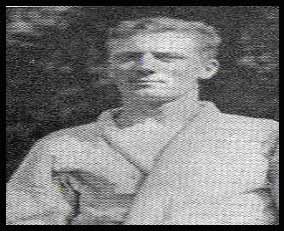
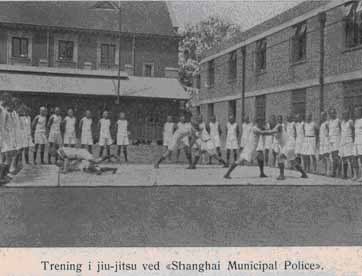
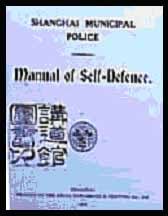 В В В В В В В В
В В В В В В В В 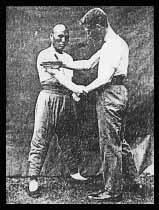 В В В В В В В
В В В В В В В 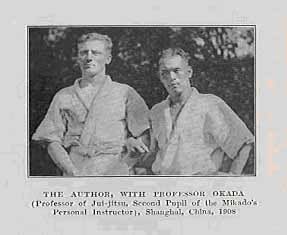
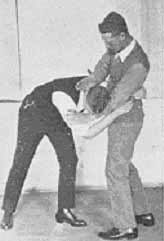
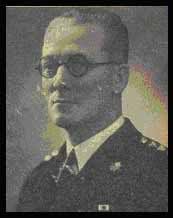
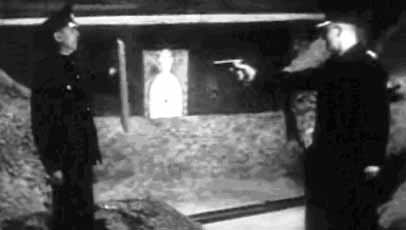
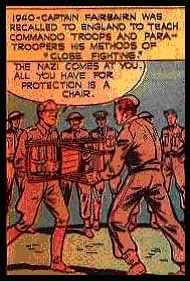
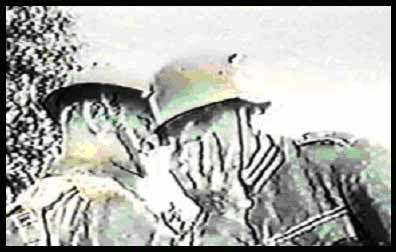
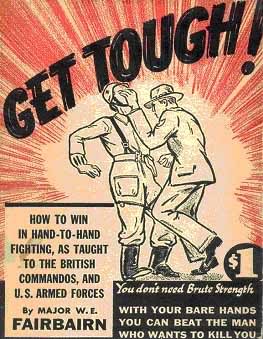
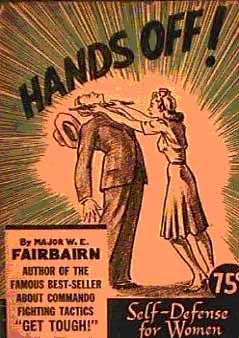
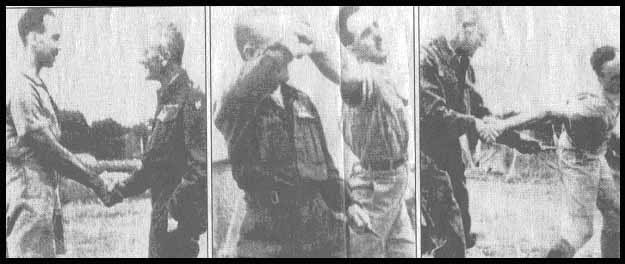
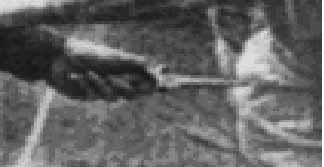
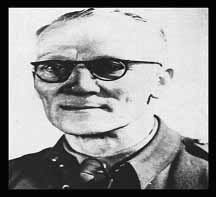
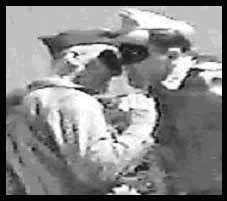
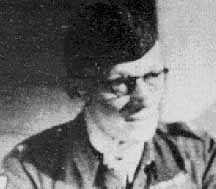
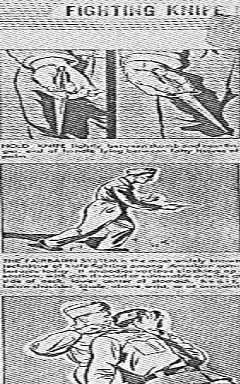
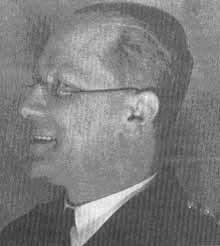
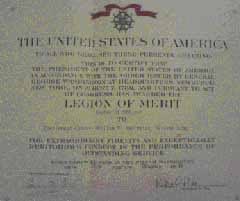 В
В 